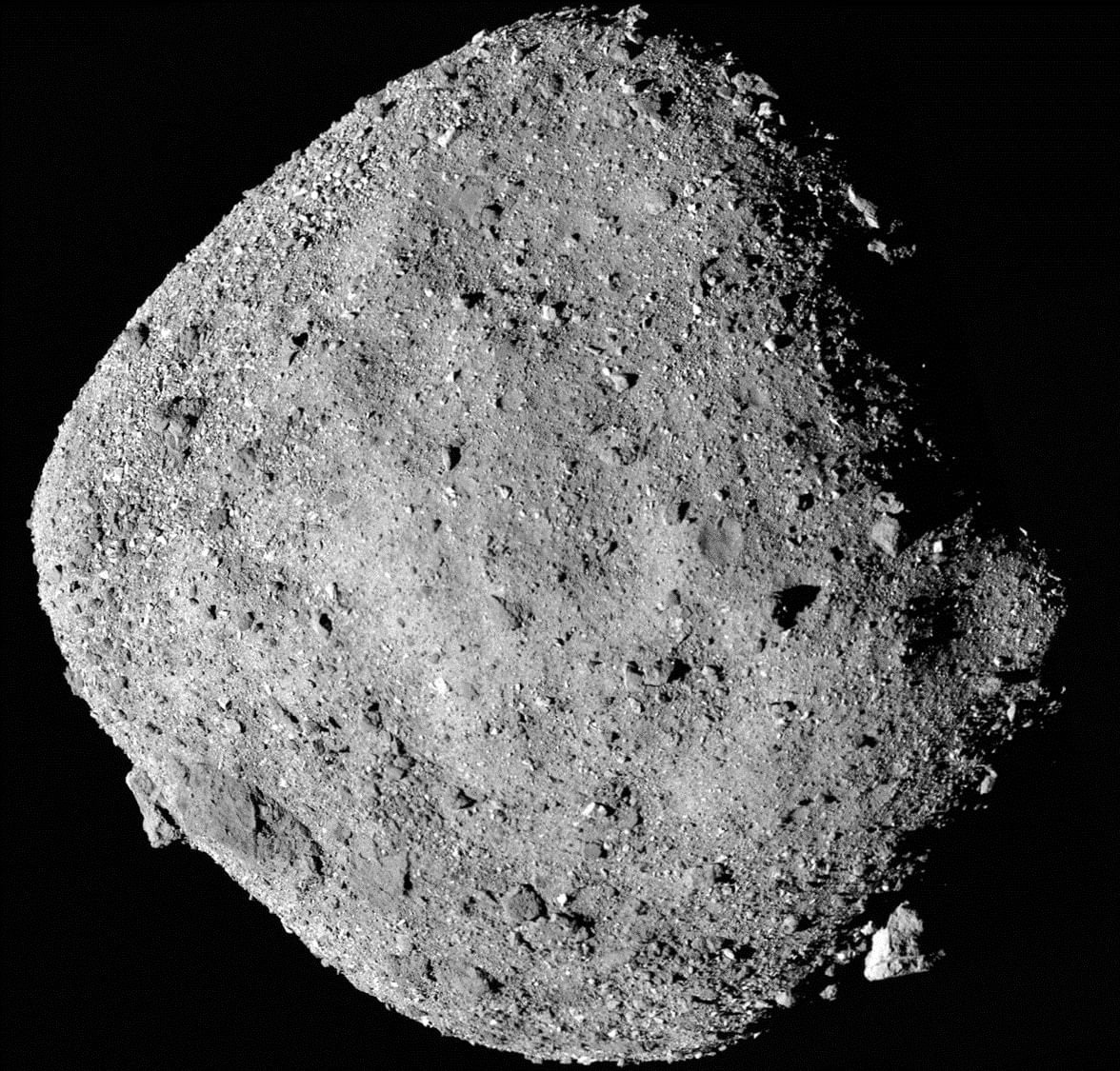WASHINGTON • Nasa's effort to grab a piece of an asteroid last Tuesday may have worked a little too well. The spacecraft, Osiris-Rex, grabbed so much rock and dirt that some of the material is now leaking back into space.
The operation some 320 million km from Earth on the other side of the Sun was "almost too successful", Professor Dante Lauretta, principal investigator of the mission, said at a telephone news conference on Friday.
Nasa officials worried that without careful effort to secure its samples in the days ahead, the mission could lose much of the scientific payload it travelled for years across the solar system to gather.
A few rocks wedged in the robotic probe's collection mechanism prevented a flap from fully closing. In images taken by the spacecraft, scientists could see bits of asteroid coming out.
Prof Lauretta estimated that each image showed about 5g to 10g of material floating around the collector. That is a significant loss as the mission's aim is to bring back at least 60g of asteroid dirt and rocks.
"You've got to remember the entire system is in microgravity," he said. The particles move as if in a fluid "and particles are kind of diffusing out".
However, visual evidence suggests that the spacecraft gathered much more than 60g. Dr Thomas Zurbuchen, the associate administrator for science, said Nasa has decided to start preparations for stowing the sample.
If the collection attempt had not succeeded, Osiris-Rex could have made two more attempts.
Mission managers also decided to call off two manoeuvres. One, scheduled for Friday, was to slow down the spacecraft and allow it to re-enter orbit around the asteroid Bennu, which is only about 490m in diameter. Instead, it continues to drift away at a speed of less than 1.6kmh.
The second one was to spin the spacecraft around yesterday to measure how much is trapped inside the collection mechanism. But that would shake out more material.
"So that is not a prudent path to go down," Prof Lauretta said.

The collection of a sample was the key objective of the mission whose full name is Origins, Spectral Interpretation, Resource Identification, Security, Regolith Explorer.
Asteroids are primitive 4.5 billion-year-old leftovers from the earliest days of the solar system. Scientists on Earth using sophisticated instruments would be able to study the Bennu material in much more detail than any instruments on the spacecraft could.
Last Tuesday, the spacecraft's collection mechanism touched the asteroid Bennu at a leisurely pace of about 4cm a second. The sampling mechanism, which resembles an automobile air filter, had been designed to work on a wide variety of surfaces ranging from completely rigid - "Like running into a slab of concrete," said Prof Lauretta - to something much more porous.
That part of Bennu turned out to be on the softer side, with the asteroid hardly pushing back at all. The sampling mechanism pushed 25cm to 50cm into the soil before the spacecraft backed away, allowing it to fill up its collector when a burst of nitrogen gas from the probe stirred up the surface.
"We could not have performed a better collection experiment," Prof Lauretta said.
The operation to stow the collection mechanism may start on Tuesday. Engineers are looking at how to modify the procedure to minimise the amount of material that may be shaken out into space. It will take several days before the samples are safely stored in a return capsule.
Osiris-Rex must wait until March to leave Bennu and return to Earth, a journey that will take 21/2 years. The spacecraft will drop off the return capsule, which will parachute to a landing in Utah on Sept 24, 2023.
Osiris-Rex is the third mission to attempt to bring back pieces of an asteroid.
A Japanese mission, Hayabusa, faced a series of technical malfunctions and it barely managed to bring back any samples - about 1,500 grains - from an asteroid it was studying called Itokawa.
The Japanese space agency sent a second mission, Hayabusa2, to a different asteroid, Ryugu. That spacecraft is on its way back to Earth and will drop its asteroid payload in the Australian Outback in December.
NYTIMES

